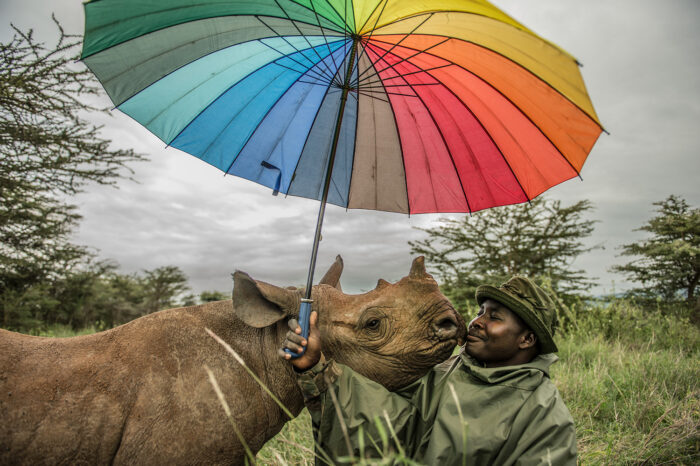
“Kilifi was an 18-month-old rhino and his keeper, Kamara was hand-raising along with two other baby rhinos at Lewa Wildlife Conservancy in Kenya. Kamara would spend 12 hours every day watching over the vulnerable baby rhinos. Kenya’s black rhino population had plummeted to near extinction but their numbers are again rising in Kenya due to the efforts by the people and government to protect them.”
When Ami Vitale met Kamara, a ranger at the Lewa Wildlife Conservancy in Kenya, he was raising three orphaned baby rhinos. One of them was 18-month-old Kilifi, who’d been cared for by the conservancy since he was just days old. Kamara worked twelve-hour days, in all weather, hand-raising the rhinos. Once, he even protected a baby from a lion. Kamera and Kilifi, Vitale’s portrait of the ranger and baby Kilifi, is now available for just $100 as part of the Vital Impacts Winter Print Sale.
Over one hundred photographers, working across genres, are participating. Along with prints from some of the world’s leading conservation, wildlife, and environmental photographers, Dr. Jane Goodall has contributed signed prints. Included are photographs made by Dr. Goodall in the 1960s during her landmark time in Gombe National Park, where she first met a chimpanzee named David Greybeard, and where later, he and other chimpanzees welcomed her into their community. It was also during this time that she made seminal discoveries about the inner worlds of chimpanzees.
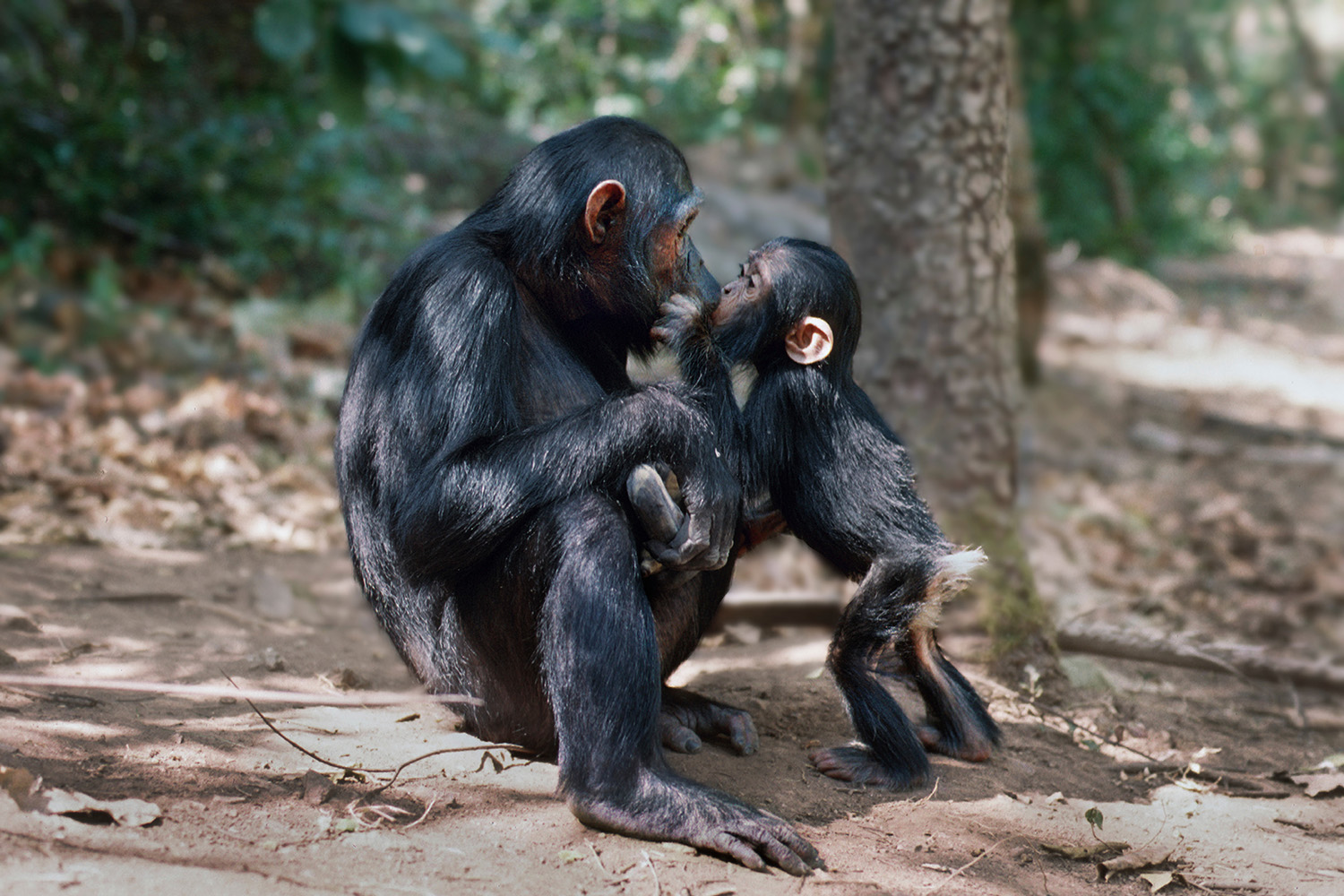
“A moment captured by Dr. Jane Goodall, DBE, Founder of the Jane Goodall Institute (JGI) and UN Messenger of Peace. This print is hand-signed by Dr. Jane Goodall herself. Says Dr. Goodall, ‘This photo is of Fifi’s first grandchild, Fax, son of daughter Fanny. It was taken in 1993.’”
With a goal of $1 million in mind, the project will support the rising generation of environmental storytellers and community leaders, through Jane Goodall’s Roots & Shoots project for young changemakers as well as the Vital Impacts Environmental Photography mentoring and grants program. Vital Impacts has just recently announced two $20,000 grants for environmental photography and a mentorship program for fifty honorees, both supporting in-depth environmental documentary work.
The print sale is breathtaking both in content and in scope, with plenty of famous photographs and hidden gems included. Steve McCurry, Britta Jaschinski, Tim Flach, Aletheia Casey, Charlie Hamilton James, Jimmy Chin, Jasper Doest, Acacia Johnson, David Guttenfelder, Brian Skerry, Michael Yamashita, Tamara Dean, Chris Burkard, Jim Naughten, Xavi Bou, Carlton Ward Jr., Karine Aigner, Andy Parkinson, Jim Richardson, David Doubilet, Steve Winter, and dozens more are included, along with the photographers whose images are shown here.
While many of the images capture some of the rarest, untouched wild spaces remaining on our planet, the specter of the climate crisis is present too. In a series of limited edition prints, Nick Brandt traces the intersecting life stories of wildlife and people caught on the frontlines of flooding and deforestation, fighting for survival.
Stories of tenderness and hope, shared between humans and other animals, also run throughout the collection, starting with photographs from Vitale and Goodall. In the waters off Dominica, Zammie the sperm whale plays with the photographer Steve Woods. There are moments of beauty found in seemingly more ordinary, everyday settings as well: in Asheville, North Carolina, Corey Arnold finds black bear cubs playing on rope swings set out for them by the local community.
And there is reason to hope. While documenting the work of the Lewa Wildlife Conservancy in Kenya, where she met Kamara the ranger, Ami Vitale also got the chance to see Samburu warriors touch a rhino for the very first time. Their grandfathers had seen rhinos in the wild, but they’d never seen one in person or in photos. Thanks to the conservation efforts of places like Lewa, Kenya’s vulnerable black rhinos are once again returning to the wild.
Today, December 14th, is the last day to order your prints in time for December 24th in the US and Europe, so get yours now. Vital Impacts will offset the emissions associated with printing, shipping, ordering, and web hosting—making for a carbon-neutral print sale. 60% of the proceeds will support young and emerging environmentalists through Roots & Shoots and Vital Impacts.
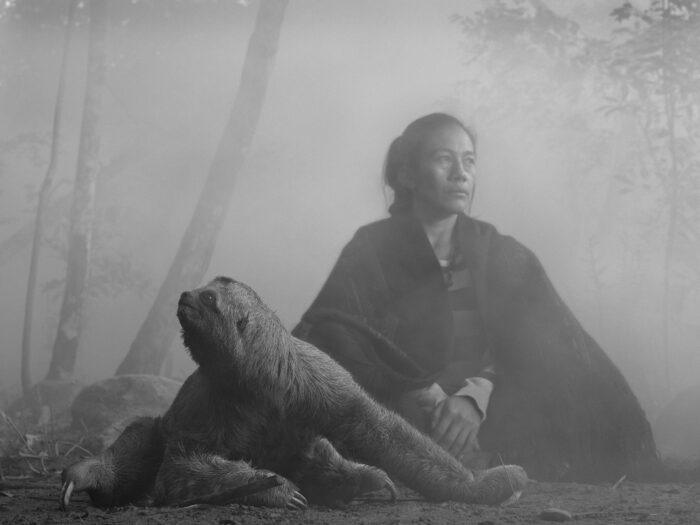
“In 2014, the heavy rains came to Ruth’s region and did not stop for several weeks. The river close to her house burst its banks and rose so high that it reached the roof. Ruth was only able to save a few things.
“Water and mudslides destroyed and damaged more than 60,000 homes. Many lives were lost, and many lost their livelihoods. About 150,000 cattle also died, as well as countless wild animals. The worst flood in 60 years, the level of destruction was caused not just by climate change, but also by deforestation on mountainsides, creating increased run-off into the already swollen rivers.
“Zosa, a three-toed sloth, was perhaps 8 months old here. She was confiscated by police from a restaurant in 2021. Along with many other animals, she was kept there to attract customers, after being bought as a baby in a nearby market town. Like so many other animals, her mother was killed. Zosa was rescued by Senda Verde Animal Sanctuary in Bolivia, where she now lives safely in the forest there, and where this photograph was taken.
“Because sloths are the slowest-moving mammal in the world, these astonishing, gentle creatures increasingly meet terrible deaths. As more and more of the Amazon is destroyed by fires started by man, the sloths are too slow to be able to escape. When the trees they inhabit in the forest are chopped down, they come crashing down with the trees. Countless others are run over.”
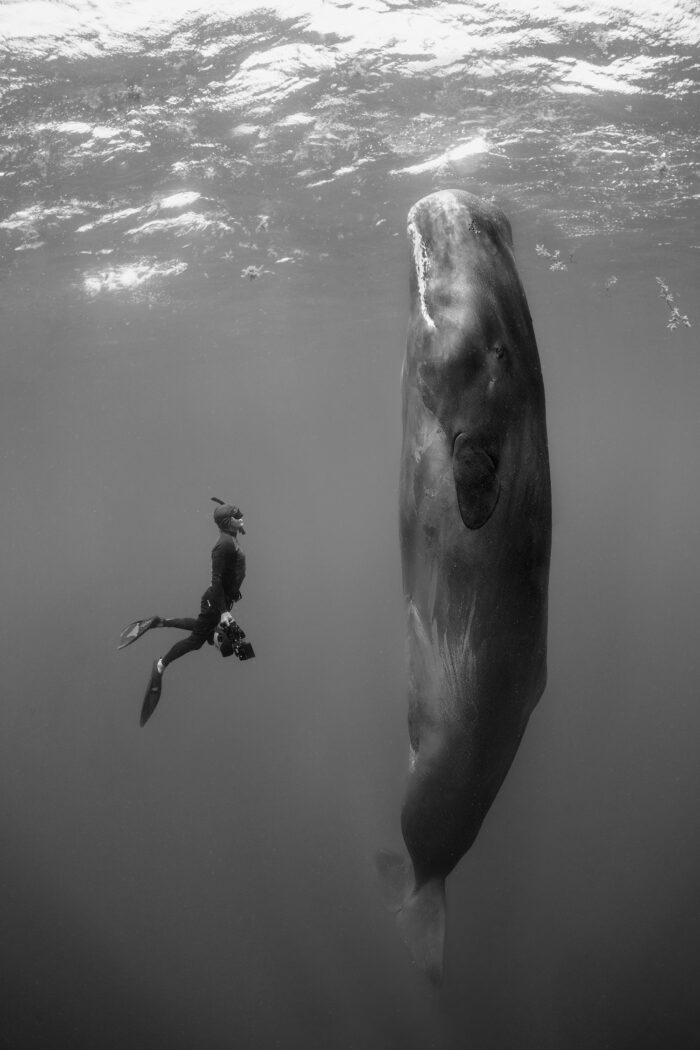
“This particular whale, a female called Zammie, investigated us, played with us, fell asleep and dozed next to us, then did it all in repeat.”
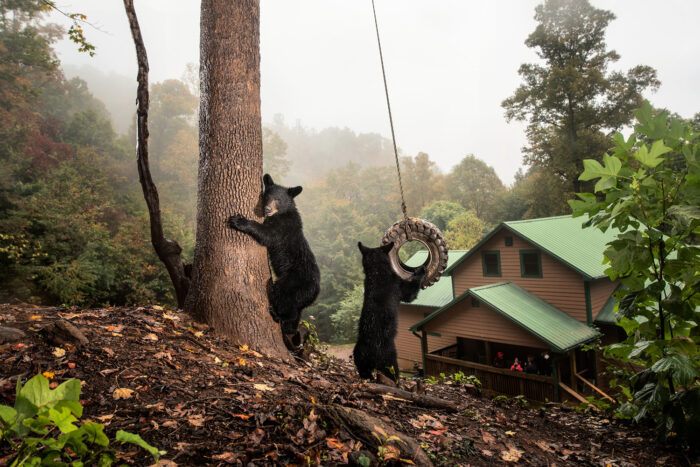
“In the backyard of a home in Asheville, North Carolina which butts up against a large wild green space, more then a dozen black bears pass through each week. Urban bears live side by side in this community, and residents even set up toys and rope swings for the cubs, a source of entertainment for the neighborhood.”
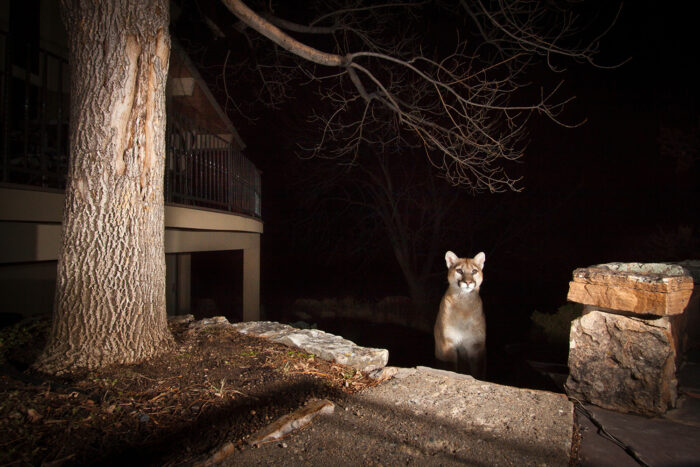
“Boulder, Colo., sees upwards of 70 mountain lion (Puma concolor) sightings in a year, likely only a fraction of actual activity within city limits. Friends reported to me that one night while watching a movie in their basement apartment, they glimpsed a mountain lion outside the sliding glass door. So I strapped a camera trap to their patio furniture and a birdbath and waited. Two months, multiple blizzards and an array of housecat selfies later, we caught a glimpse of the visitor we’d been searching for.”
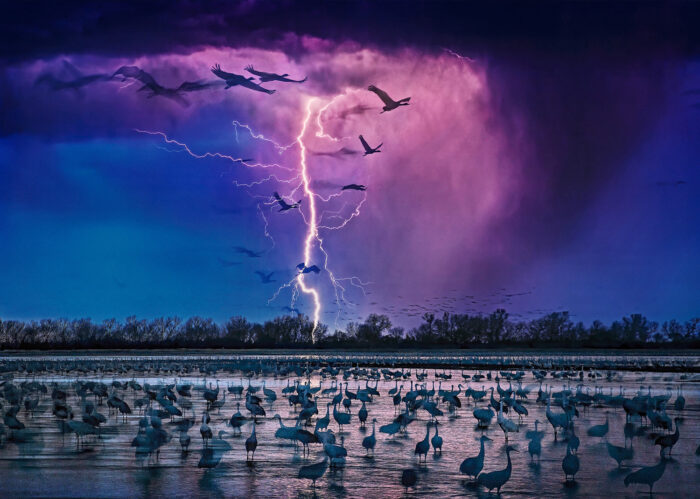
“Every spring 80% of Lesser Sand Hill Cranes and some Greater Sand Hill Cranes come to the Platte River, and the concentration is higher here than anywhere in the world. The Crane Trust counted 413,000 Sandhill Cranes on this evening-more than they’ve ever counted before, so this image is what it must have looked like millions of years ago.”
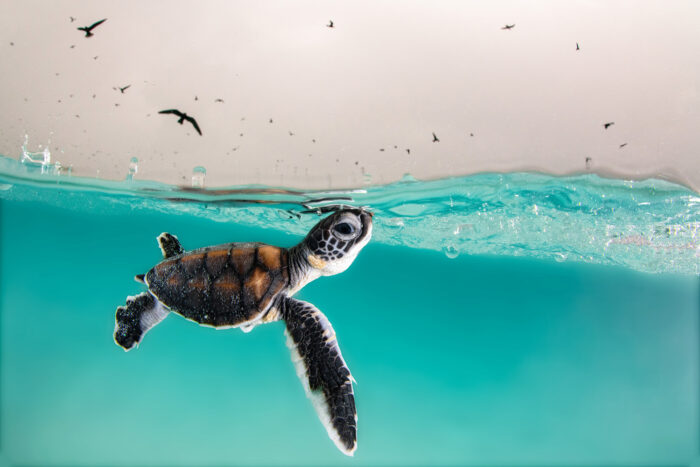
“Heron Island, Queensland, Australia. A Green Sea Turtle hatchling cautiously surfaces for air to a sky full of hungry birds. Against all odds, this hatchling must battle through the conditions of a raging storm whilst evading a myriad of predators.
“Not only has the tropical storm brought out thousands of circling birds, but there are also patrolling sharks and large schools of fish on the hunt for baby turtles. Only 1 in 1000 of these hatchlings will survive, will this one survive against all odds.”
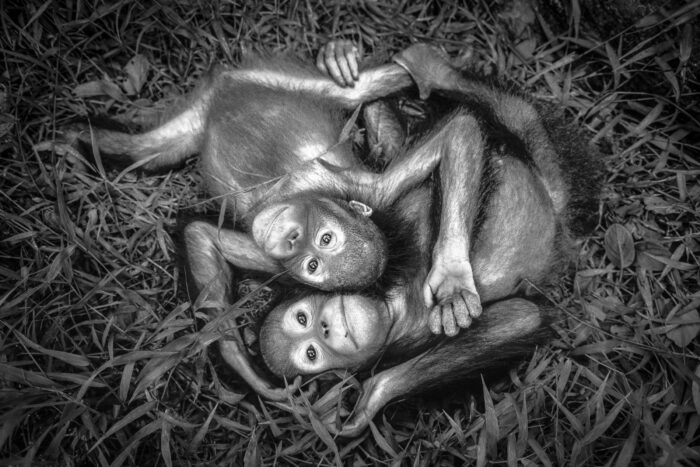
“Two orphaned orangutans cling to each other at a rehabilitation center in northern Borneo. Like humans, they need affection and care from their mothers in order to become healthy adults. Orangutans live only on the islands of Borneo and Sumatra, and baby orangs are victims of the illegal pet trade—captured by poachers who kill their mothers to reach them. We need to protect the forests orangutans depend on to insure that our next of kin on the family tree of life will be with us beyond our lifetime.”
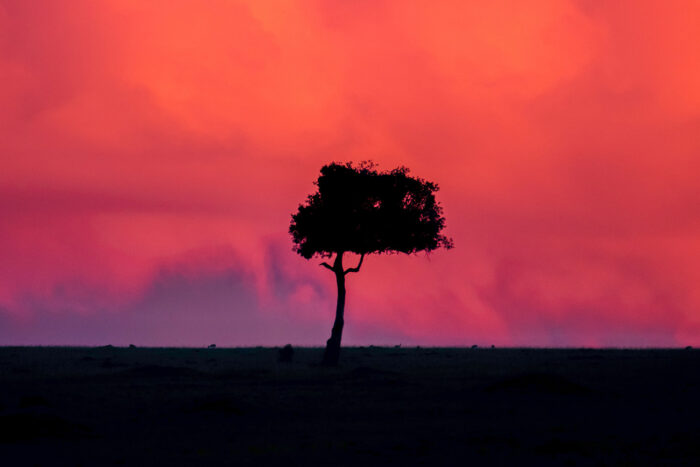
“Silhouette lone tree and magical stormy, sunset sky in Kenya’s Masai Mara, April 2018. The Mara’s vast plains are full of these iconic single-standing acacia trees, they are what give the Mara its name with the Masai word mara meaning ‘dotted’ or ‘spotted.’”
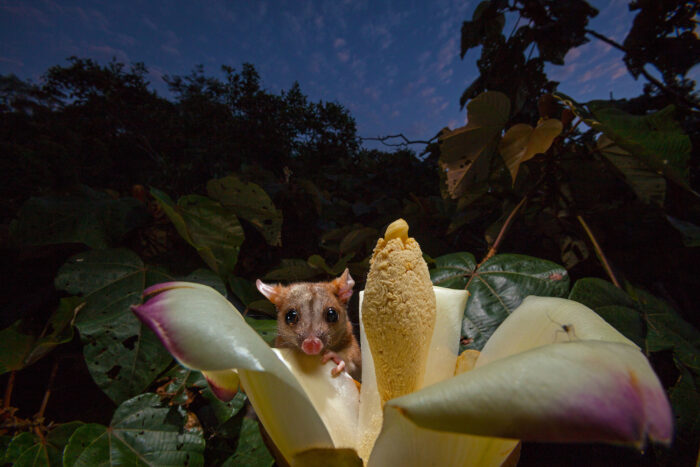
“A woolly Opossum (Caluromys derbianus) feeding on the nectar of a balsa flower (Ochroma pyramidale).”
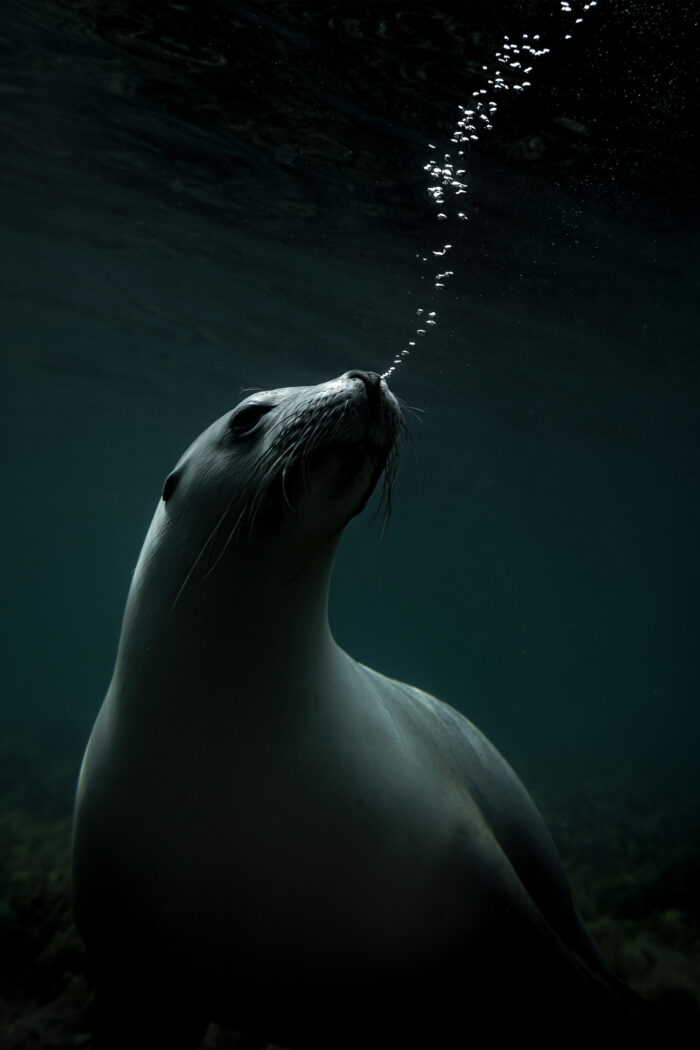
“When I look into your deep dark eyes, I see an ocean full of colour. A trail of bubbles is your connection to the world above. We are all here to coexist, and though you are fearful, you accept my presence. I feel your curiosity, though I could never truly understand you.
“You are unconventionally beautiful. With fur as smooth as silk and your whiskers coarse like wire, you fold your ears back as you gaze at your reflection in my camera port. This may be the first time you have seen yourself, yet I know you don’t appreciate your beauty.
“I write this for you, on behalf of you. The endangered. Only 6500 est. of you remain in this world.
‘Take a moment and look into my eyes. Get closer. I am the one without a voice. My plea is silent but must it be heard; you hold the future of my existence in your hands. Don’t forget about me.’
“The silence in the water becomes loud, and the air in my lungs becomes heavy. It pulls me back to the surface as I remember we are from different worlds.”
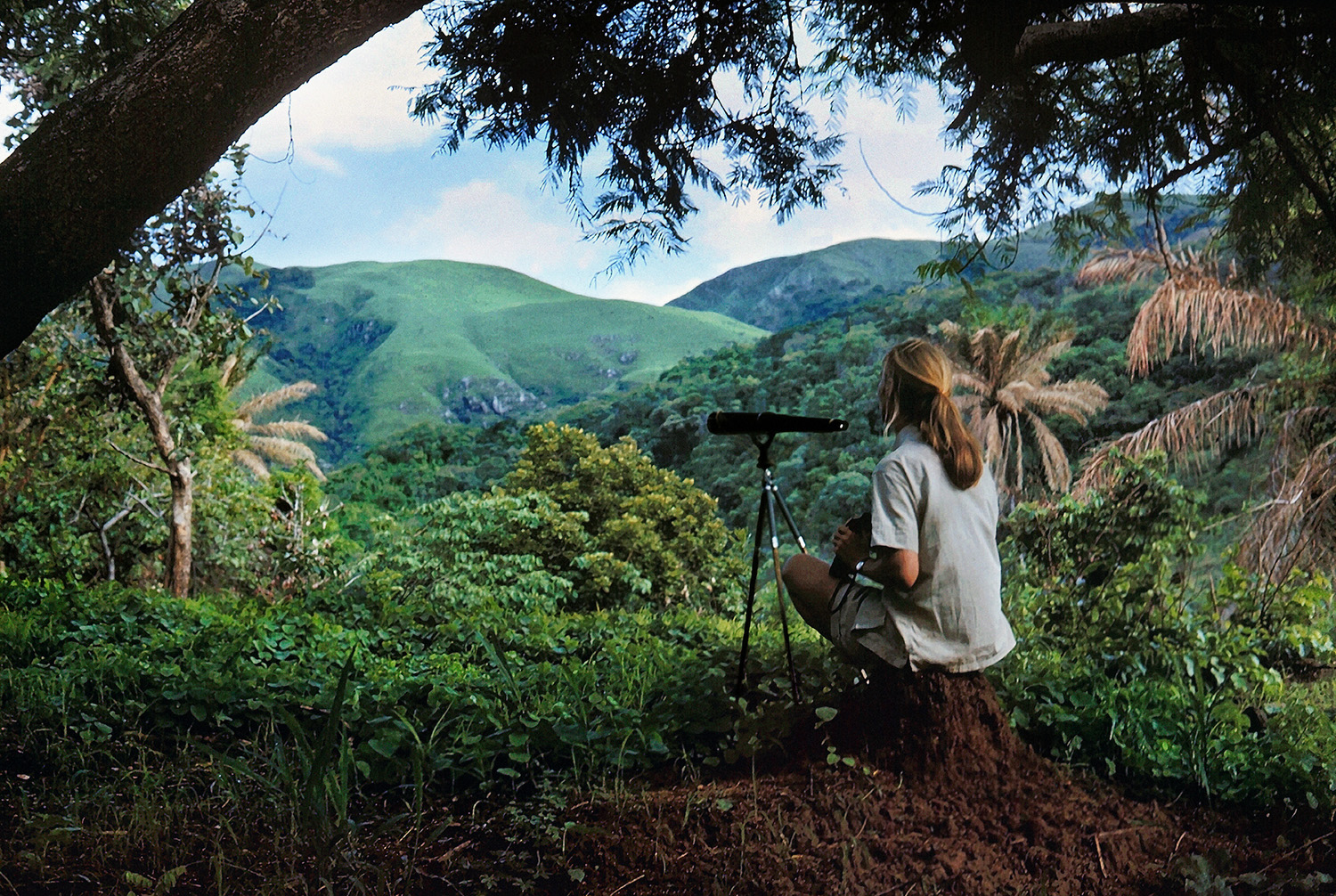
“In her early days at Gombe, Dr. Jane Goodall spent many hours sitting on a high peak with binoculars or a telescope, searching the forest below for chimpanzees. She took this photo of herself with a camera fastened to a tree branch.
“Says Dr. Goodall, ‘I was really excited to see that that photo of me looking out at the valley at Gombe with my trusty lightweight telescope was chosen. It was taken in, I think, 1962. I was on my own, very high up in the hills and I thought what a great photo this would make.
‘I had to find a place where there was a tree that was just right for balancing the camera. I had to set up the tripod and fiddle about until I had the tripod and the imagined image of me framed just right. That was in the days before digital so I had to wait a long time before I got the results back from National Geographic. I was pretty proud of myself. I love that picture.”‘”


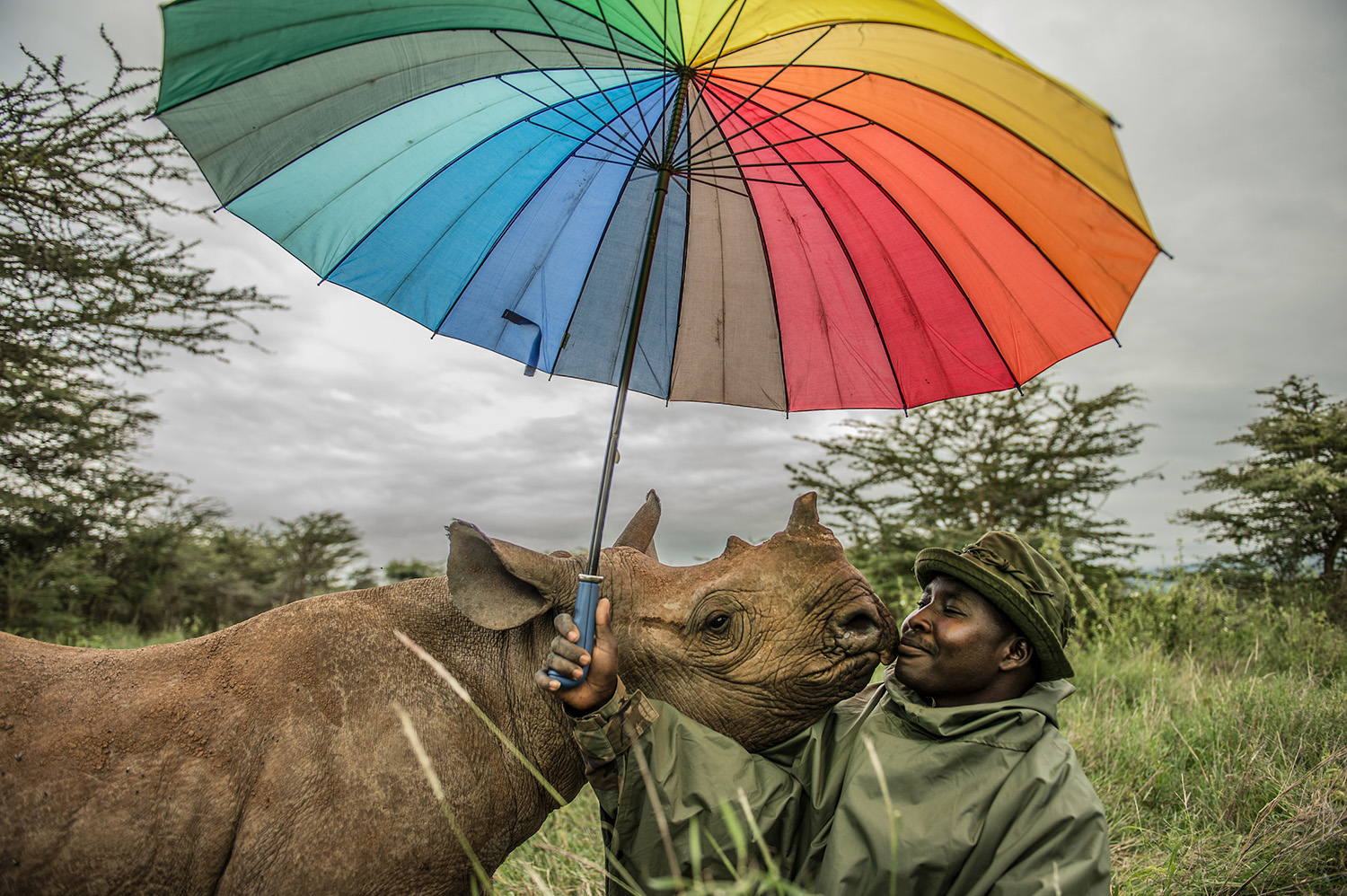
Leave a Reply